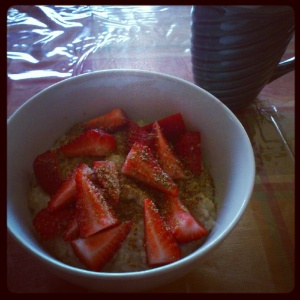I believe that the key to a successful fat loss plan is consistency, particularly with the food you eat. If your food doesn’t taste good, chances are you’ll crave the other options that could sabotage your efforts. Fat loss is a marathon. It doesn’t happen overnight. You need to find a system that works for you personally, and it has to be something you can do over a period of time.
The goal is to create a lifestyle change that is not temporary, but permanent. When you read a diet book that promises change but under extreme circumstances, you need to ask yourself whether or not you can do it long term. If not, you need to find something else.
Most of your fat loss is going to happen outside of the gym. I would be so bold as to say that the majority of it is going to happen in the kitchen. Finding foods that are healthy and delicious is how you are going to execute this plan of yours successfully until your reach your goal, or better yet, eat healthy forever.
One of my go-to healthy and delicious meals is oatmeal. When many people think of oatmeal their first thought is “boring.” That is why you need to spice it up a bit. Here’s my recipe to turn oatmeal from a boring meal into something you’ll want to eat every day.
½ cups oats
1 ½ cups of water
5 medium strawberries, sliced
1 tsp. cinnamon
10 almonds
Pour the oats and water into a pot and bring to a boil. Once it’s boiling reduce heat to low and stir occasionally for 5 minutes. While this is happening slice your strawberries. Once the oats are ready pour them into a bowl, sprinkle your cinnamon on top, and add the strawberries and almonds. It’s really that easy.
You can honestly replace the strawberries for any berry, and the almonds for another nut. It’s up to you. Like I said, success is going to happen when you find a plan that works for you. The most anyone can do is make suggestions, and educate you on the foundation of building a food plan that is meant for fat loss.
Let me know what you think of this recipe if you try it, or what changes you make to better suit you.
Follow Shane on Twitter. Like Shane on Facebook.
If you enjoy this article and would like to receive other similar articles directly to your email inbox please make sure to subscribe to So Healthy Nutrition.











